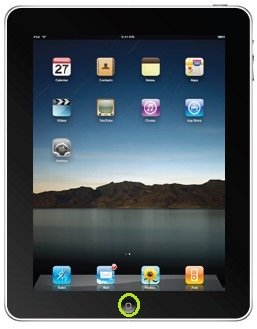

- #Hard reset ipad pro 2018 how to#
- #Hard reset ipad pro 2018 free#
- #Hard reset ipad pro 2018 windows#
If not all of this solves your iPad storage issues, you may need to do a complete backup, erase and restore of your iPad model.Recovery key hp windows 10.
#Hard reset ipad pro 2018 free#
IOS devices and iOS/iPadOS need to maintain, at the very least, a minimum of between 2-4 GBs of free data storage space, AT ALL TIMES, to insure normal/nominal functionalities/operation and general overall performance of any iOS device running iOS/iPadOS. Once you have performed all the steps, wait for a few seconds and your 2018 iPad Pro will boot up completely to the iPad Pro’s Lock screen. You will see the Slide to Power off button, but keep on holding down the Power Button until you see the Apple logo, then let it go. Then, Press and Hold the Power Button at the top. Tap and hold the Top button for at least 5 seconds. Not Selected Learn more Hard resetting a cellular phone completely wipes it. Then immediately Press and Release the Volume Down button.ģ. Press the volume up button for one second, followed by the volume down button for one second. Free home delivery on eligible products or collect in store The iPad Pro 9. Press and Release the Volume Up button.Ģ. Try the new hard reset procedure for the new 2018/2020 iPad Pro models.ġ. The new hard reset procedure for newer iPad Pro models Step 3: When prompted, enter the devices passcode to complete the process. Please note you should press and release the button, and not press and hold the Volume Up. STEP 1: Press and Release Volume Up button Press and release the Volume up button at the right side of the iPad.
#Hard reset ipad pro 2018 how to#
Step 2: Tap on 'Reset > Erase all Contents and Data'. In this tutorial, we will show how to force restart or hard reset your iPad Pro (2018) without the Home button in 3 easy steps. Then, for older iPads or iPads with a Lightning connector, do a hard reset of your iPad by holding down both the Home and sleep/wake buttons simultaneously until your iPad goes to black and restarts with Apple logo, then release the buttons. Step 1: Open the settings app on your iPad and tap on 'General'. To permanently delete photos/images off of your iDevice go into the Photos app and find the Recently Deleted folder/album and permanently delete any photos/images stored in that folder/album.Īlso, you can check to see what other stuff is eating up all your valuable data storage space by going into the Settings App,General Settings Panel, in the right hand column, tap Storage & iCloud usage panel ( in iOS 11, it’s iPad Storage ), in the top Storage Panel, tap the Manage Storage panel, wait for a list of apps to generate that will tell you how much space each app is taking up on your iDevice. If you use a POP email account on your iPad, delete/thin out any old saved emails that maybe saved to your iPad. Then, thin out/delete any music/videos/movies/TV shows/podcasts/screen recordings/images/eBooks/ĮMagazine/iBooks/audio books/Documents/PDFs, etc.

Step 2: Press and quickly release the Volume Down button. There are NO more older, common and popular third party apps for old 8 and 9-year old iOS devices, any longer! ) If you have an iPad without a Home button, such as the 2020 iPad Pro, you need to: Step 1: Press and quickly release the Volume Up button. ( Third party iOS app developers have permanently removed all of their older, legacy apps from Apple's iOS App Store servers forever! Then, delete any installed apps that you no longer use or use infrequently enough that they aren't missed (you can always reinstalled any purchased or free apps at some time later, as you need them).Ī disclaimer to the immediate advice above, if you own a 8 or 9-year old iPad, you SHOULD ONLY delete apps that you have ever seldom used or no longer use as there is NO WAY now, in 2020, to retrieve these old apps from the iOS App Store, any longer. If you need to free up free data storage space on an iPad/iDevice, you need to start by backing up your iPad to either Apple's iCloud ( you may need to pay for additional, monthly storage space ) or by connecting your iDevice to a computer running the latest iTunes and/or some other offsite, “cloud” data storage/backup services, like Google Drive/Photos, DropBox, BOX, Amazon Cloud Drive, Flickr ( for photos/images ), etc.


 0 kommentar(er)
0 kommentar(er)
